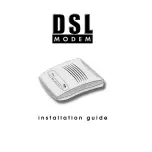
Product Overview
1-3
Cable Modem Terminology
HFC
Hybrid fiber-coaxial (cable). Older CATV systems were provisioned using only
coaxial cable. Modern systems use fiber transport from the headend to an optical
node located in neighborhood to reduce system noise. Coax runs from the node to
the subscriber. The fiber plant is generally a star configuration with all optical
node fibers terminating at a headend. The coaxial cable part of the system is
generally a trunk-and-branch configuration.
Host
Any end-user computer system that connects to a network. In this guide, the term
host refers to computer systems connected to the LAN interface of the cable
modem.
Host Device
See
Host
for details.
MCNS
Multimedia Cable Network System Partners Ltd., a consortium of cable
companies representing the majority of homes in the U.S. and Canada who have
decided to drive a standard with the goal of having interoperable cable modems.
QAM
Modulation scheme mostly used in the downstream direction (QAM-64,
QAM-256). QAM-16 is expected to be usable in the upstream direction.
Numbers indicate number of code points per symbol. Number of bits per symbol
can be computed by 2^(number of bits/symbol) = number of code points.
QPSK
Modulation scheme used in the upstream direction. Supports two data bits per
symbol.
Subscriber Unit (SU) A term used for cable modems. See
Cable Modem
for a description.
Upstream
The set of frequencies used to send data from a subscriber to the headend.


























